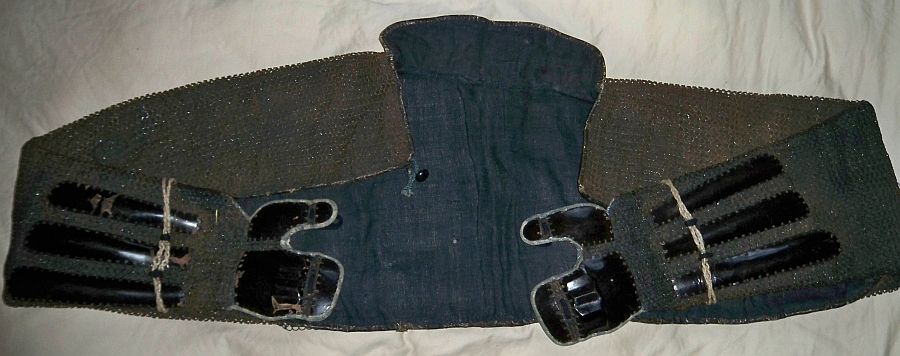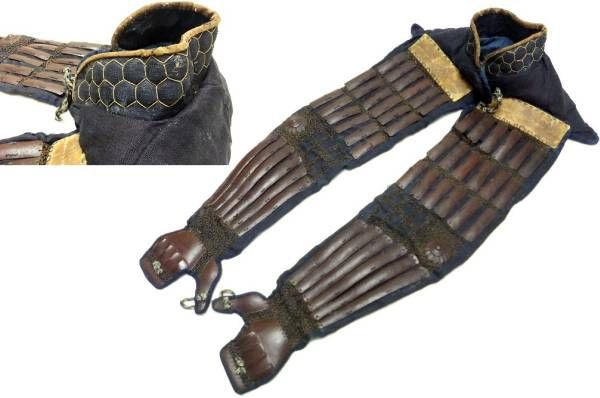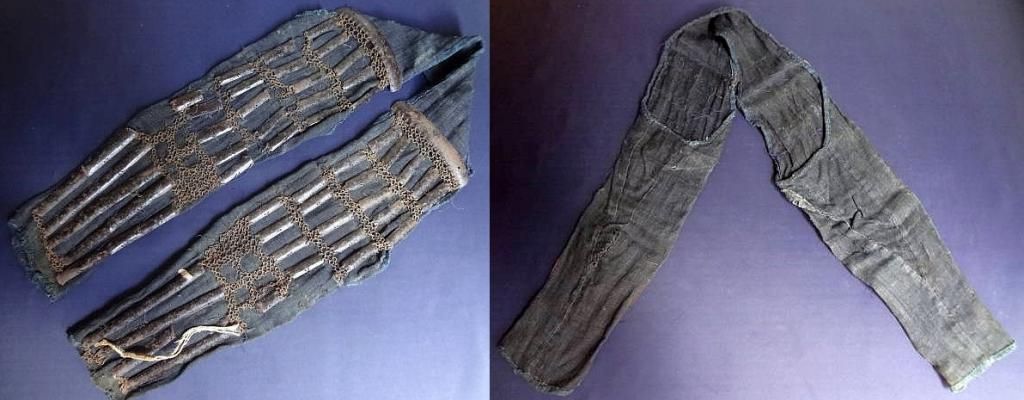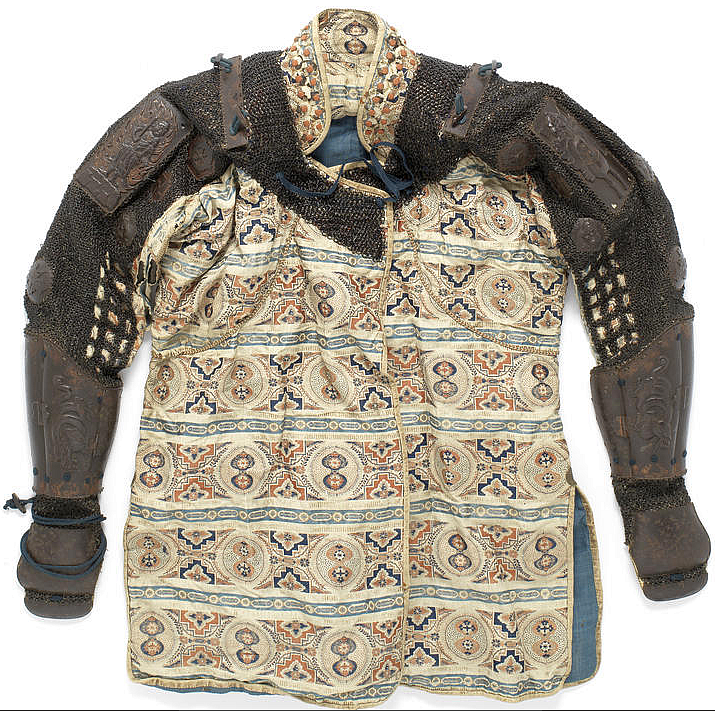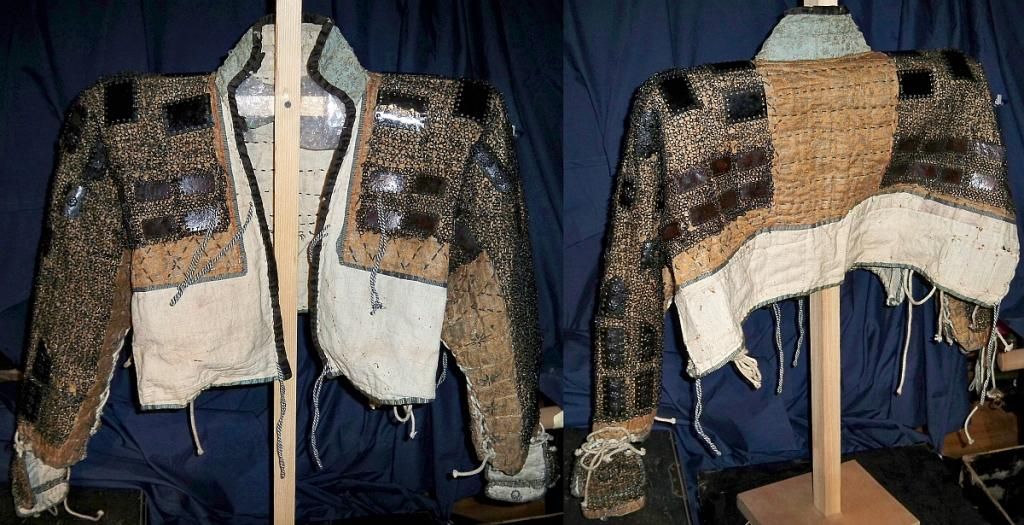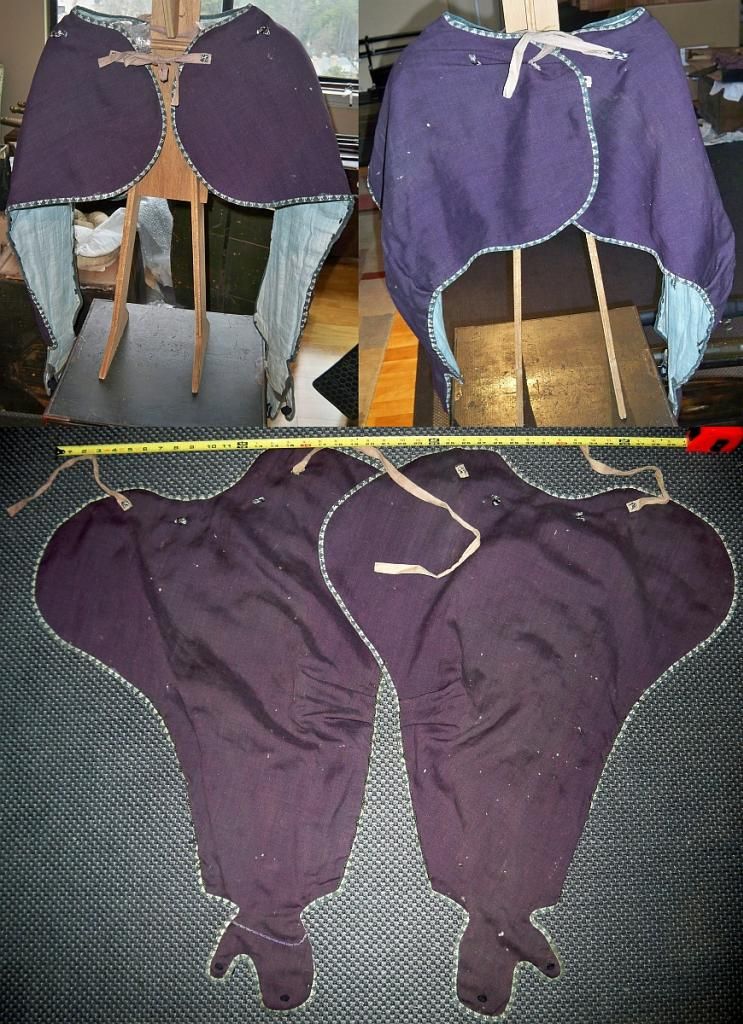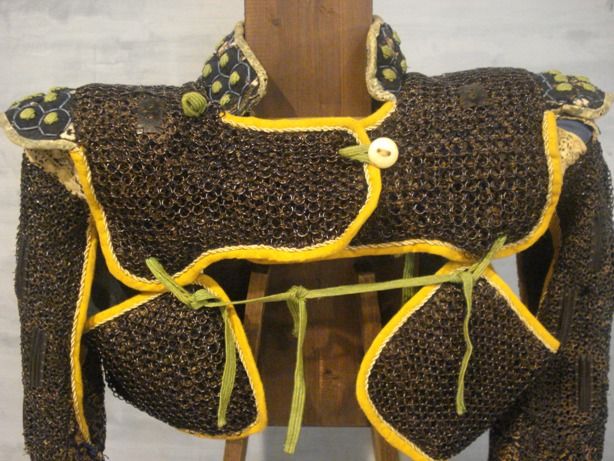|
|
Post by safetyturtle on May 28, 2013 8:16:46 GMT -5
I'm about to step into the world of japanese armour making after having spent the past few years dreaming and reading the online japanese armour manual over and over. Even so I still have a few things I'm not sure about so I thought I'd ask. 1: Odoshi colour: I know that some colours, like blue, were used more than others, but what about colour shade?...if say I wanted red lace on my armour, is it one specific type of shade of red or could I use a lighter one, darker one etc? 2: Tatami do: I came across this picture on google images1.bonhams.com/image?src=Images/live/2011-03/24/8272001-1-2.jpg&tmp=web300&top=0.000000&left=0.000000&right=1.000000&bottom=1.000000&dt=zoom_imageI kinda like the look of the kikko-shaped plates but then I became a bit unsure if this would belong in the "edo period weirdness" family or something that could/was used in the sengoku period? 3: Regarding the various cords I would need (to attach the sode, etc), is there a specific thickness they need to be or could I more or less use whatever as long as it's round? 4: When making a Do using kozane, have I misunderstood something or are you supposed to lace them individual kozane together into lames, then laquer it and then lace the lanes of kozane to eachother? (I would be using leather and the not the plastic plates for this). 5: From what I can understand, mostly all kote during the sengoku period was attached to the watagami, but are there any evidence of it being attached in some manner to a manchira or something of the sort? Originally I was going to have it tied on the arm under the armour, but it seems this was "the old way" and had gone out of style in later periods...I could very well be wrong though. Hope my questions are clear enough and understandeble  |
|
|
|
Post by worldantiques on Jun 1, 2013 0:53:40 GMT -5
I'm about to step into the world of japanese armour making after having spent the past few years dreaming and reading the online japanese armour manual over and over. Even so I still have a few things I'm not sure about so I thought I'd ask. 1: Odoshi colour: I know that some colours, like blue, were used more than others, but what about colour shade?...if say I wanted red lace on my armour, is it one specific type of shade of red or could I use a lighter one, darker one etc? 2: Tatami do: I came across this picture on google images1.bonhams.com/image?src=Images/live/2011-03/24/8272001-1-2.jpg&tmp=web300&top=0.000000&left=0.000000&right=1.000000&bottom=1.000000&dt=zoom_imageI kinda like the look of the kikko-shaped plates but then I became a bit unsure if this would belong in the "edo period weirdness" family or something that could/was used in the sengoku period? 3: Regarding the various cords I would need (to attach the sode, etc), is there a specific thickness they need to be or could I more or less use whatever as long as it's round? 4: When making a Do using kozane, have I misunderstood something or are you supposed to lace them individual kozane together into lames, then laquer it and then lace the lanes of kozane to eachother? (I would be using leather and the not the plastic plates for this). 5: From what I can understand, mostly all kote during the sengoku period was attached to the watagami, but are there any evidence of it being attached in some manner to a manchira or something of the sort? Originally I was going to have it tied on the arm under the armour, but it seems this was "the old way" and had gone out of style in later periods...I could very well be wrong though. Hope my questions are clear enough and understandeble  A few answers. #2:According to Anthony Bryant's book "Early Samurai AD 200-1500" tatami armor was in use during the "latter half of the sixteenth century". I am not exactly sure how this information came about but I would guess that there would be verifiable research in the form of period images, text, or identifiable armor. You can read the statement here. books.google.com/books?id=TPw7m2qrRloC&pg=PA31&dq=tatami+armor&hl=en&sa=X&ei=boepUavvAsGUiAKkjYCgCw&ved=0CFQQ6AEwBw#v=onepage&q=tatami%20armor&f=false#4. You are correct about the kozane being laced together and lacquered into lames. There were other methods used but I am not sure if they were used during the period you are interested in. I have seen kozane individually lacquered and then laced into lames, this creates a very flexible armor. #5. There were several types of kote used that did not need to be attached to the dou, some were in the form of a short jacket or manchira were the kote could be attached by kohaze to the vest, some kote would tie to each other, others were one piece that you slipped your arms into, but I am not sure about the time period on these types of kote. |
|
|
|
Post by safetyturtle on Jun 1, 2013 1:11:25 GMT -5
Thank you very much for your answers, think I know all I need for the moment and have decided on what colours to use, so about ready to get started on the project.
Thanks again.
|
|
|
|
Post by nismos14270r on Jun 2, 2013 7:54:54 GMT -5
 I deviated from the standard attachment. I made a short vest, sewed the top of the kote to the top of the vest, and used the standard lacing on the rest of the kote. It works really well, though I'm not sure of the historical accuracy. |
|
|
|
Post by safetyturtle on Jun 2, 2013 8:15:58 GMT -5
Think I'm gonna go with them being seperate pieces tied on across the chest for starters, see how that feels.
Also, don't suppose anyone know of a guide for making your own braid? thought it would be interesting to try it out.
|
|
|
|
Post by sundrop on Jun 2, 2013 11:06:26 GMT -5
Also, don't suppose anyone know of a guide for making your own braid? thought it would be interesting to try it out. Try google search of the term " Kumihimo ", there is alot of info to be found. |
|
|
|
Post by safetyturtle on Jun 2, 2013 11:34:28 GMT -5
That actually looks quite interesting, may have to give it a go...the braids do seem to get a bit thick but theres proberbly something you can do about that.
|
|
Deleted
Deleted Member
Posts: 0
|
Post by Deleted on Jun 2, 2013 19:25:47 GMT -5
Most of the armor braid in period was made using "kute uchi" loop-manipulation braiding techniques. I've done quite a bit of kumihimo on the marudai, and enjoy it quite a bit, but if you're interested in authentic armor braid, start at " www.lmbric.net/". |
|
|
|
Post by safetyturtle on Jun 2, 2013 22:44:22 GMT -5
Thank you, gonna take a look at it.
It's mainly to try and keep cost down, want to use the rice braid product but its just to expensive...same with shoelaces.
|
|
|
|
Post by worldantiques on Jun 3, 2013 6:13:17 GMT -5
|
|
|
|
Post by pallidus on Jun 3, 2013 15:48:44 GMT -5
Hey nismos14270r - it looks like the outside profile of your watagami are slanted downward on your pic. If they are, it will restrict your shoulder mobility quite a lot. I've found that (looking at your armor from the front) if the watagami are parallel to the ground, they will provide a lot more room to move your shoulders around. If you put on your armor and raise your arms above your head, you will see what I mean. Does that make sense? You can look at period suits for examples of what I'm talking about.
|
|
|
|
Post by nismos14270r on Jun 3, 2013 16:46:28 GMT -5
While I appreciate the concern, the dou pictured is just my mock up made of plastic! The watagami are actually made out of a milk jug ;D
I'm working on my steel dou right now, and I've tried to do just as you said, have the watagami lay parallel to the ground. Getting those to fit correctly has definitely been one of the trickiest part of the whole operation.
Also, those are really helpful pictures!
|
|
|
|
Post by safetyturtle on Jun 10, 2013 12:53:26 GMT -5
|
|
Deleted
Deleted Member
Posts: 0
|
Post by Deleted on Jun 10, 2013 14:15:20 GMT -5
Been thinking alot about the laces lately and starting to like the idea of making them myself but note sure exactly what I should use. I do not recommend the "rat tail" cord for learning kumihimo, or for armor laces. It is way too heavy to braid smoothly. Also, for armor you'd want to buy full rolls and not the pre-cut lengths that link offers. The silk thread is meant for decorative braids like obijime or haori ties. It is too expensive to use for learning, and would be very expensive to buy enough of for armor. For learning, I usually recommend cotton embroidery floss or cotton crochet thread. Those are inexpensive and come in a nice variety of colors. It only takes a couple of the 9-yard hanks they sell for embroidery to make a decent length braid. I've done a lot of braiding in cotton. It sounds like for your armor you want something more shiny and fancy than the cotton, though. These days I recommend going with machine embroidery thread or weaver's yarn. These are both slightly heavier than regular thread. For the smoothest braids, you're going to be bundling threads to make each strand of your braid. For instance, an 8-strand braid I finished last week had 32 threads of rayon embroidery thread per strand. These bundles make a heavier braid, but lay flatter than a heavy cord like the rattail. To get as heavy a braid using fine silk thread, I would need probably 48 or 64 threads per strand. I've used some nice silk yarns, but yarns tend to be a little fuzzier than good thread. "Halcyon Yarn" sells a product called "Gemstone Silk" that is available in a bunch of colors, and is a good medium lace weight yarn. It makes nice soft braids. I like the results I've gotten from polyester embroidery thread, though they do feel a little rough. I bought some tencel yarn a few months ago that I've been itching to use, and visually it's almost a dead ringer for the silk yarn. Um, anyway, did that answer your question? |
|
|
|
Post by safetyturtle on Jun 10, 2013 14:22:45 GMT -5
It did yes, thank you...will see if I can get the name of the yarn translated and see if I can find it in-country so I wont have to have it shipped from overseas.
May be quite silly to make my own braid for a kebiki laced kozane dou, but getting it form rice braid or the like will end up costing alot.
How broad does the braid tend to be? I suspect I will need something about 10-12mm wide.
|
|







